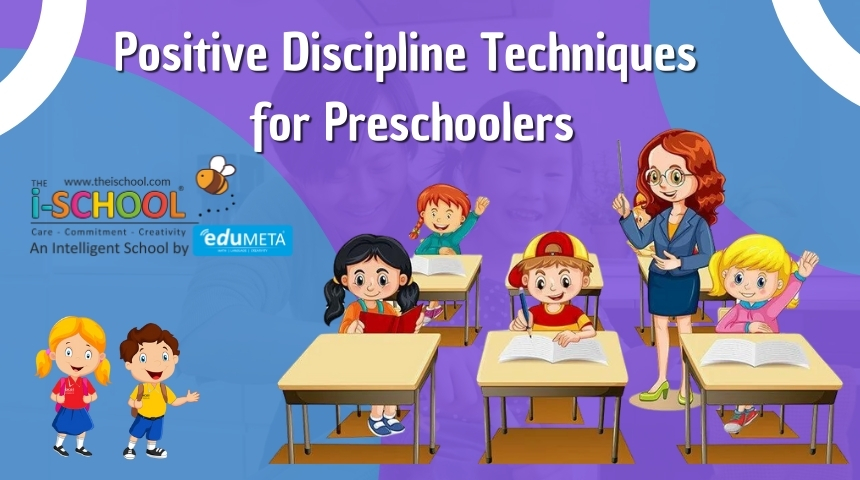Positive Discipline Techniques for Preschoolers

Discipline is an essential aspect of parenting and teaching, especially during the preschool years when children are learning to navigate social norms, boundaries, and self-control. Positive discipline focuses on teaching and guiding children rather than punishing them, helping them develop self-discipline, responsibility, and problem-solving skills. This article explores effective positive discipline techniques for preschoolers that promote a healthy, respectful, and supportive environment.
Understanding Positive Discipline
Positive Discipline Defined: Positive discipline is an approach that emphasizes teaching good behavior through positive reinforcement, empathy, and respect. It aims to build a child’s self-esteem and strengthen the parent-child or teacher-child relationship.
Benefits of Positive Discipline:
- Builds Trust: Fosters a trusting relationship between children and adults.
- Encourages Good Behavior: Promotes long-term behavioral changes rather than short-term compliance.
- Develops Emotional Regulation: Helps children learn to manage their emotions and reactions.
- Promotes Problem-Solving: Encourages children to think critically and solve problems independently.
Key Principles of Positive Discipline
Consistency:
Establish clear and consistent rules and expectations. Consistency helps children understand what is expected of them and the consequences of their actions.
Positive Reinforcement:
Reinforce good behavior with praise, rewards, and encouragement. Positive reinforcement motivates children to repeat desirable behaviors.
Empathy and Understanding:
Show empathy and understanding towards a child’s feelings and perspective. This helps children feel valued and understood, making them more receptive to guidance.
Setting Clear Boundaries:
Clearly define acceptable and unacceptable behaviors. Use simple and direct language that preschoolers can understand.
Natural Consequences:
Allow children to experience the natural consequences of their actions, when safe and appropriate. This helps them learn cause and effect.
Effective Positive Discipline Techniques
Praise and Encouragement:
Specific Praise: Provide specific praise that acknowledges the effort and behavior, such as “You did a great job sharing your toys with your friends.”
Encouragement: Encourage efforts and improvements, not just results. For example, “I see you tried really hard to clean up your toys. Good job!”
Time-In Rather Than Time-Out:
Time-In: Instead of isolating a child with a time-out, use a time-in to sit with them and discuss their feelings and behavior. This helps them understand and process their emotions.
Calm Down Corner: Create a calm down corner with comforting items where children can go to relax and regain control of their emotions.
Modeling Positive Behavior:
Lead by Example: Demonstrate the behaviors you want to see in your child. Children learn by observing adults, so model patience, kindness, and respect.
Role-Playing: Use role-playing to teach appropriate behavior and problem-solving skills. Act out scenarios and guide children on how to respond.
Redirecting Behavior:
Redirection: Redirect inappropriate behavior to a more acceptable activity. For example, if a child is throwing toys, suggest they throw a soft ball outside instead.
Offer Choices: Give children choices to help them feel in control. For instance, “Would you like to clean up the blocks first or the crayons?”
Problem-Solving Together:
Collaborative Problem-Solving: Involve children in finding solutions to problems. Ask questions like, “What can we do to make sure everyone gets a turn?”
Conflict Resolution: Teach children simple conflict resolution strategies, such as taking turns, using words to express feelings, and finding compromises.
Routine and Structure:
Predictable Routines: Establish predictable daily routines to provide a sense of security and stability. Consistent routines help children understand expectations and reduce behavioral issues.
Visual Schedules: Use visual schedules to help children follow routines and understand what comes next.
Tips for Implementing Positive Discipline
- Stay Calm: Maintain a calm and composed demeanor when addressing behavior issues. Children are more likely to respond positively when adults remain calm.
- Be Patient: Positive discipline takes time and patience. Consistent application of these techniques will yield long-term benefits.
- Involve the Child: Involve children in setting rules and consequences. When children have a say, they are more likely to follow the rules.
- Use Positive Language: Frame instructions and corrections in a positive manner. Instead of saying “Don’t run,” say “Please walk.”
Conclusion
Positive discipline techniques for preschoolers focus on teaching and guiding rather than punishing. By usi ng positive reinforcement, empathy, clear boundaries, and natural consequences, parents and teachers can foster a supportive environment that promotes good behavior and emotional development. These techniques help children develop self-discipline, responsibility, and problem-solving skills, setting the foundation for a lifetime of positive behaviors and healthy relationships. Embracing positive discipline ensures that children grow up feeling valued, understood, and capable of making good choices.
